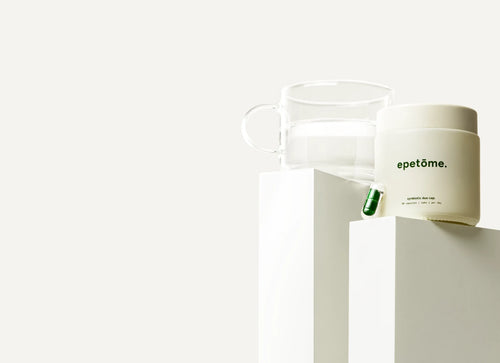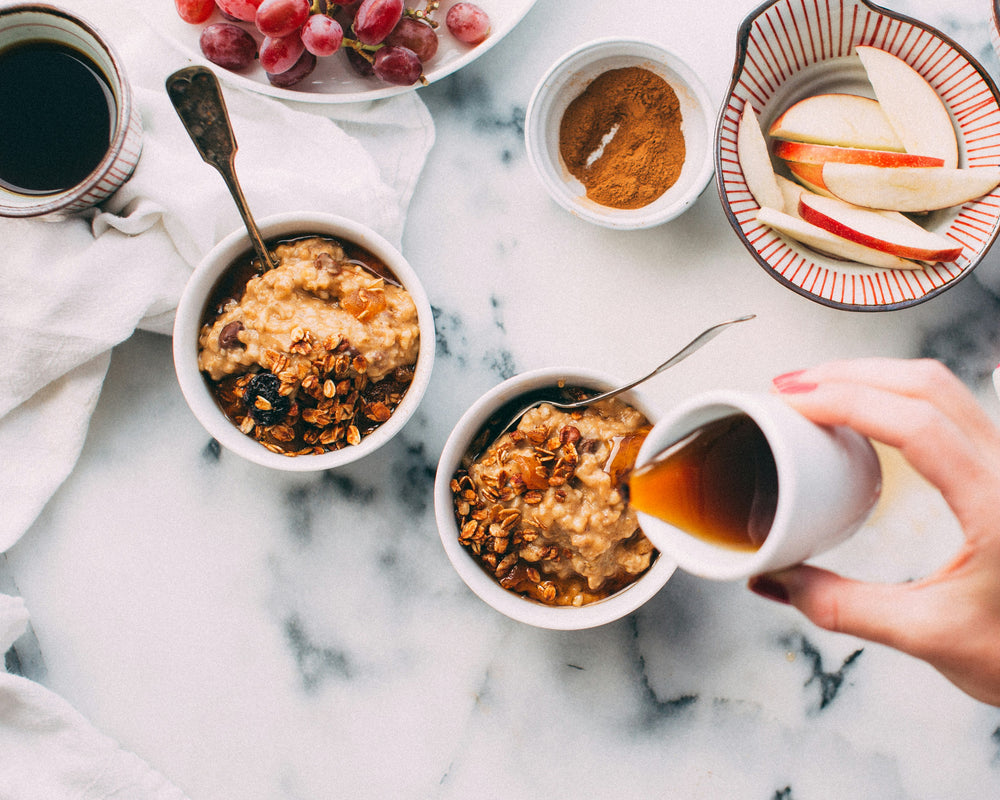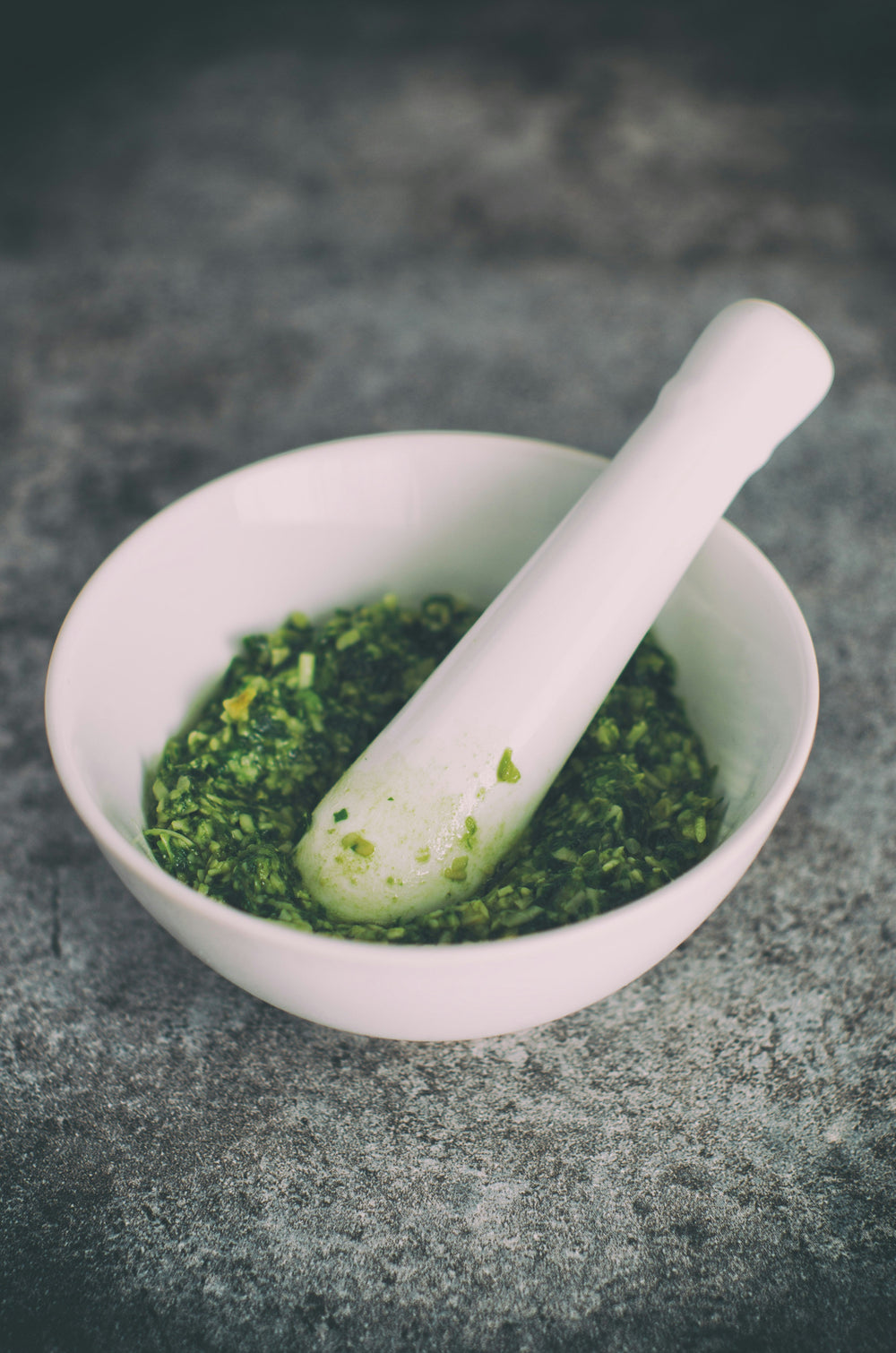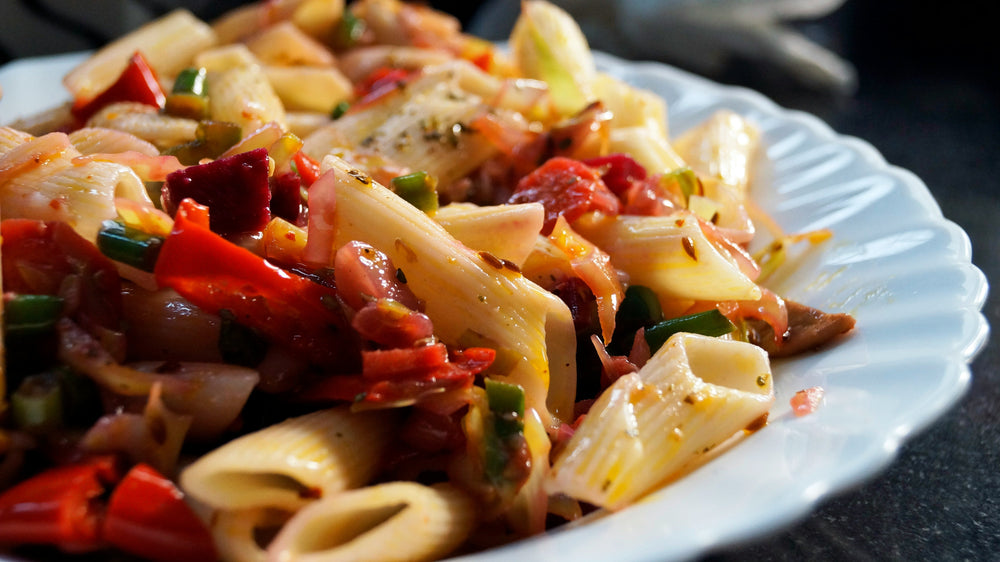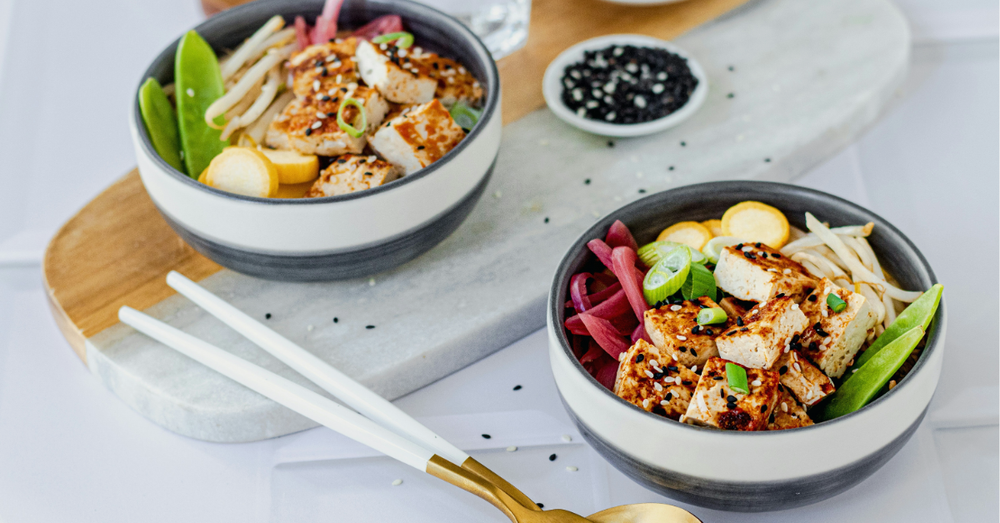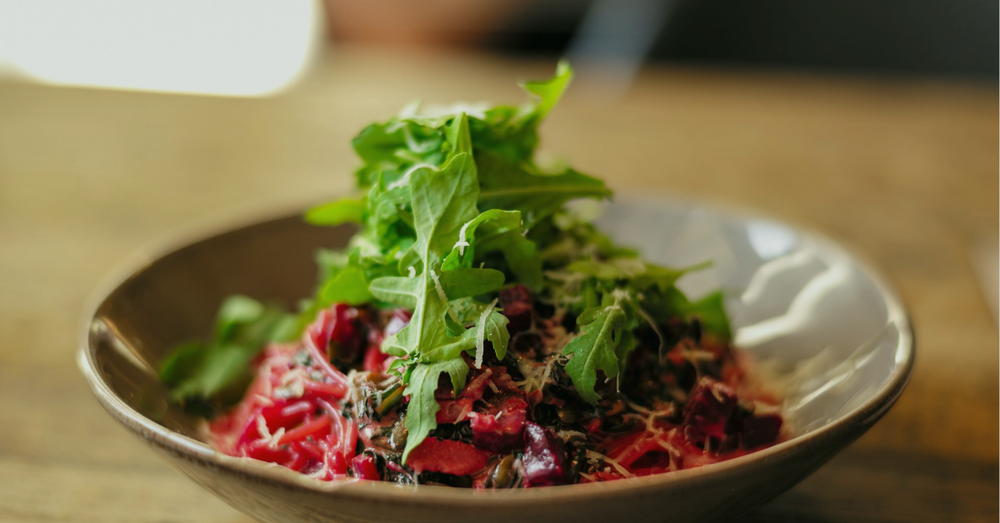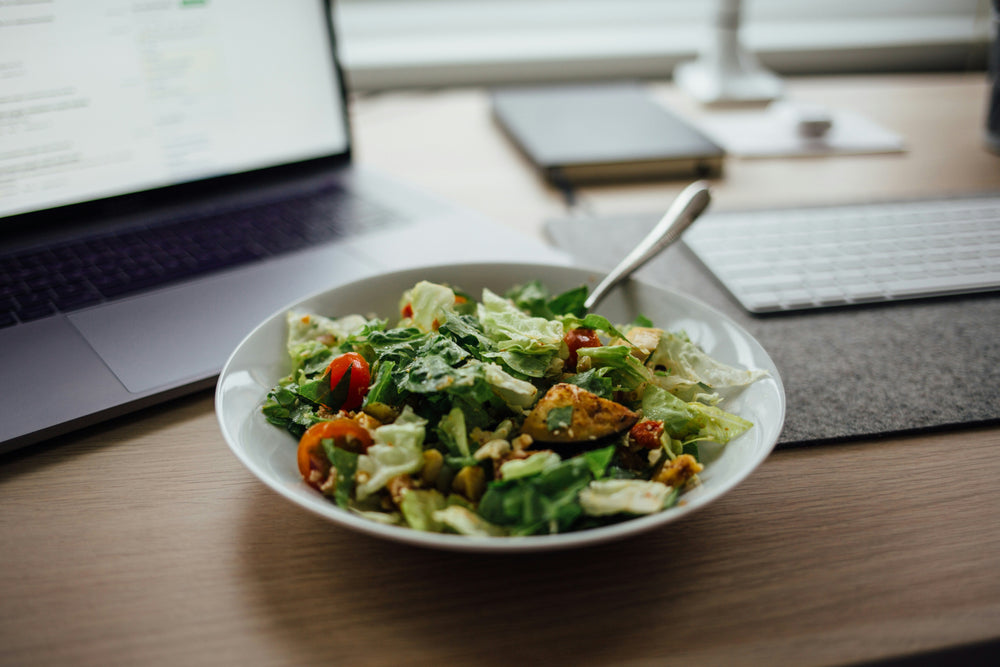This creamy green soup brings together broccoli, cauliflower, and kale for a delicious bowl that feels both comforting and energising. Finished with crispy chickpeas and toasted almonds, it is an easy way to enjoy a whole day’s worth of greens in one simple, nourishing meal.
can't digest dairy? here's what might be happening.
Can’t Digest Dairy? Here’s What Might Be Happening If your stomach protests every time you enjoy a scoop of ice cream or pour milk into your tea, you might be dealing with lactose intolerance. It’s incredibly common and often misunderstood. Let’s clear things up and explore how your gut health might be involved. What Is Lactose Intolerance? Lactose is the natural sugar found in dairy products. Our bodies need an enzyme called lactase to digest it. If we do not produce enough lactase, that lactose moves through the gut undigested. This can lead to symptoms like bloating, tummy pain, loose stools, nausea and excess wind. But why does this happen? And does it affect everyone the same way? Can You Develop Lactose Intolerance Later in Life? Yes, you absolutely can. Lactose intolerance is not just something you are born with. It can develop gradually. In fact, most cases of primary lactose intolerance begin in later childhood, during the teenage years or in adulthood. This happens naturally as your body starts to produce less lactase over time. For many people, the change is so slow they do not notice it at first. You might find that foods you once ate without issue now leave you feeling bloated or uncomfortable. That is completely normal. It is also worth knowing that the ability to digest lactose varies depending on your genetics and cultural background. Some people continue to produce lactase throughout life, while others do not. Your body may simply be asking for a gentler approach. Types of Lactose Intolerance Once you understand how your body processes lactose, it becomes easier to figure out what kind of support it might need. There are two main types of lactose intolerance. Primary Lactose Intolerance This is the most common form. It is genetic and lifelong....

Can’t Digest Dairy? Here’s What Might Be Happening
If your stomach protests every time you enjoy a scoop of ice cream or pour milk into your tea, you might be dealing with lactose intolerance. It’s incredibly common and often misunderstood. Let’s clear things up and explore how your gut health might be involved.
What Is Lactose Intolerance?
Lactose is the natural sugar found in dairy products. Our bodies need an enzyme called lactase to digest it. If we do not produce enough lactase, that lactose moves through the gut undigested. This can lead to symptoms like bloating, tummy pain, loose stools, nausea and excess wind.
But why does this happen? And does it affect everyone the same way?
Can You Develop Lactose Intolerance Later in Life?
Yes, you absolutely can.
Lactose intolerance is not just something you are born with. It can develop gradually. In fact, most cases of primary lactose intolerance begin in later childhood, during the teenage years or in adulthood. This happens naturally as your body starts to produce less lactase over time.
For many people, the change is so slow they do not notice it at first. You might find that foods you once ate without issue now leave you feeling bloated or uncomfortable. That is completely normal.
It is also worth knowing that the ability to digest lactose varies depending on your genetics and cultural background. Some people continue to produce lactase throughout life, while others do not. Your body may simply be asking for a gentler approach.
Types of Lactose Intolerance
Once you understand how your body processes lactose, it becomes easier to figure out what kind of support it might need. There are two main types of lactose intolerance.
Primary Lactose Intolerance
This is the most common form. It is genetic and lifelong. After weaning (the transition from breastmilk or formula), our bodies naturally reduce lactase production. In many parts of the world, especially where dairy was not traditionally a part of the diet, this is completely normal.
Symptoms tend to appear gradually, often in the teenage years or adulthood, and they usually continue throughout life.
Secondary Lactose Intolerance
This form is different and often temporary.
Secondary lactose intolerance occurs when the lining of the small intestine becomes damaged. That damage can reduce lactase production. It might be triggered by a tummy bug, untreated coeliac disease, Crohn’s disease or even chemotherapy.
Unlike primary lactose intolerance, this type can improve. Once the gut lining heals, your ability to digest lactose may return.
How the Gut Microbiome Affects Dairy Digestion
This is where things become particularly interesting.
Your gut microbiome plays a big role in how you break down food. Some of these bacteria can help digest lactose, even if your own lactase levels are low.
A review of clinical trials found that probiotics (which are live, beneficial bacteria) can help reduce symptoms of lactose intolerance. Strains such as Lactobacillus and Bifidobacterium were shown to support digestion and ease discomfort after eating dairy.
You can take these as supplement, or you can find them naturally in fermented foods such as kefir, live yoghurt and sauerkraut.
That same study also highlighted the benefits of prebiotics, which are types of fibre that feed your helpful gut bacteria. Think of them as nourishment for your microbiome. Foods like onions, garlic, oats and bananas help maintain a healthy balance in your gut.
What This Means for You
If dairy has been making you feel uncomfortable, it does not necessarily mean you need to give it up completely. This is especially true if you are dealing with secondary lactose intolerance or milder symptoms.
Here are a few ways to work with your body:
-
Try lactose-free dairy. It is still real milk, just without the lactose.
-
Take it slowly. Many people can handle small amounts of lactose, especially when eaten with other food.
-
Include fermented dairy such as yoghurt or kefir that contain live bacteria.
-
Consider probiotic supplements. Look for strains such as Lactobacillus acidophilus or Bifidobacterium longum, which have shown promise in clinical research.
-
Add prebiotic foods to your meals. Onions, bananas, oats and garlic are all great options.
You might even try reintroducing small amounts of lactose gently over time. This gradual approach can help your microbiome adapt. It is known as colonic adaptation. Although it sounds technical, the idea is simple: your gut bacteria learn to support you more effectively.
Of course, everyone’s experience is different. Some people adjust quickly, while others need more time. If you believe you might have dairy intolerance, it is a good idea to speak with your GP or a registered dietitian.
References
Malik, T. F., & Panuganti, K. K. (2023). Lactose intolerance. In StatPearls [Internet]. Treasure Island (FL): StatPearls Publishing; 2025 Jan. Retrieved from https://www.ncbi.nlm.nih.gov/books/NBK532285/
Saiprasad, S. M., Moreno, O. G., & Savaiano, D. A. (2023). A narrative review of human clinical trials to improve lactose digestion and tolerance by feeding Bifidobacteria or galacto-oligosaccharides. Nutrients, 15(16), 3559. https://doi.org/10.3390/nu15163559
Szilagyi, A. (2015). Adaptation to lactose in lactase non persistent people: Effects on intolerance and the relationship between dairy food consumption and evaluation of diseases. Nutrients, 7(8), 6751–6779. https://doi.org/10.3390/nu7085309
lifestyle. gut health recipes.
ready in 10 minutes
herb-whipped cottage cheese chicken bagels.
These basil whipped cottage cheese protein bagels make a fresh, high-protein breakfast or lunch, combining creamy herb-blended cottage cheese with juicy chicken, rocket, and tomatoes. They’re quick to assemble, packed with flavour, and perfect for a nourishing breakfast or light lunch.
ready in 10 minutes
kiwi chocolate protein chia pots.
These Kiwi Chocolate Protein Chia Pots make an ideal high-fibre, high-protein breakfast that keeps you full and energised all morning. They’re quick to prepare, easy to store, and perfect for a healthy grab-and-go option.
ready in 15 minutes
spiced apple porridge.
This spiced apple and pumpkin seed porridge is a warming, high-fibre breakfast that’s perfect for cosy mornings. Made with creamy oats, gently caramelised apples and a crunchy pumpkin seed topping, it’s ready in just 15 minutes and serves one.
ready in 50 minutes
prep-ahead baked blueberry oats.
These prep-ahead oven-baked oats with blueberries and bananas are rich in protein and fibre, making them a nourishing, gut-friendly breakfast to enjoy all week.
ready in 15 minutes
spicy green eggs with feta.
These spicy green eggs with feta are a quick, protein-rich recipe packed with gut-friendly ingredients like spinach, courgette, and spring onion. Baked in the oven or air fryer, they’re simple to make, full of flavour, and support digestion with a balance of fibre, protein, and healthy fats. Perfect for breakfast, brunch, or a light meal, this vibrant dish proves that nourishing your gut can be both delicious and easy.
ready in 10 minutes
egg wrap with pesto.
Bright, fresh, and ready in just 10 minutes, this flavour-packed wrap serves one and is ideal for breakfast, lunch, or any time you’re after something simple yet filling.
ready in 10 minutes
peach cobbler overnight oats.
Start your day with a gut-friendly twist on a classic dessert. The peach cobbler overnight oats serve 2–3 and takes just 10 minutes to prepare the night before. Packed with fibre, flavour and feel-good ingredients, it’s the perfect make-ahead option for busy mornings or a nourishing snack you can enjoy any time of day.
ready in 15 minutes
smoky egg salad bagel crunch.
This smoky harissa egg bagel is the perfect 15-minute meal. Made with creamy Greek yoghurt, tangy pickles, and a hint of spice, it’s a high-protein twist on classic egg salad that delivers on both taste and texture. Ideal for busy days, this easy bagel recipe makes lunch feel gourmet without the effort.
ready in 20 minutes
chewy breakfast matcha protein cookies.
Soft, satisfying, and subtly sweet—these breakfast cookies are made to fuel your morning the right way. With fibre-rich oats, plant-based protein, and antioxidant-packed matcha, they’re a gut-friendly grab-and-go option that doesn’t compromise on flavour or function.
ready in 15 minutes
lemon & poppy seed pancakes.
Emily's light, gut-friendly crêpes are the perfect balance of fibre, protein, and healthy fats to support digestion and keep you feeling great.
ready in 10 minutes
carrot cake breakfast oats.
Start your day with a delicious and nutritious breakfast option - Carrot Cake Oats. Filled with fibre diversity to promote healthy digestion.
